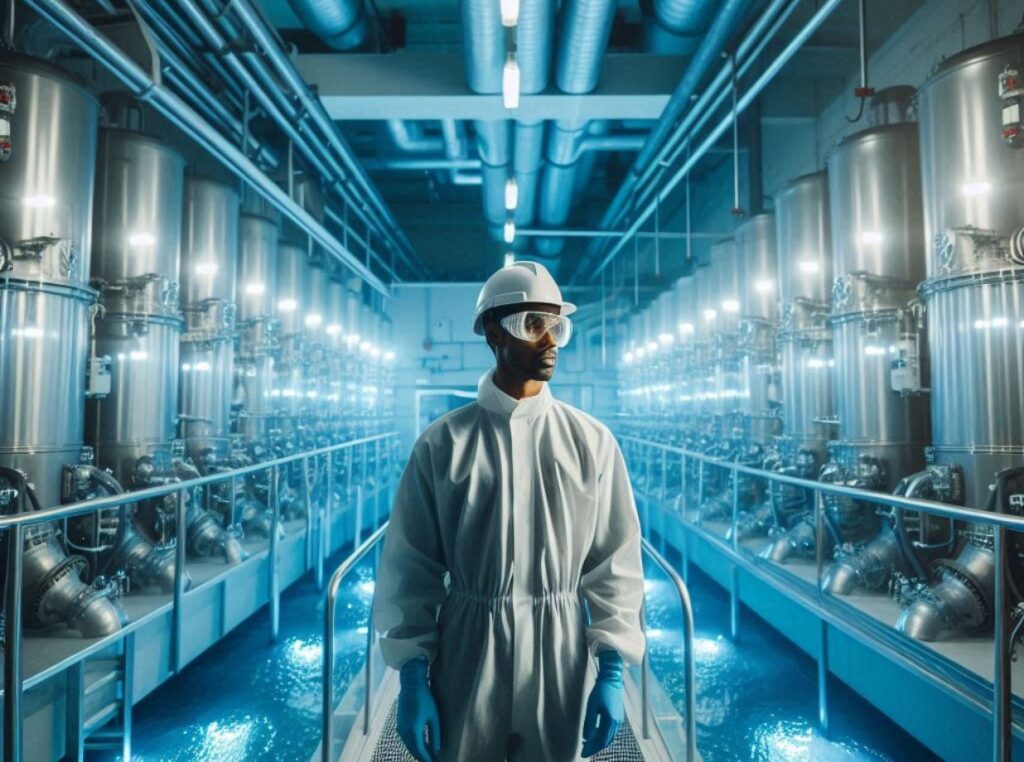What are the most effective methods for treating wastewater to ensure environmental sustainability and public health?
Understanding Wastewater
Wastewater, often defined as water that has been used for domestic, industrial, or agricultural activities, contains a mixture of various contaminants. These include organic and inorganic substances, nutrients, pathogens, and sometimes hazardous materials. Understanding the composition of wastewater is crucial because it informs the treatment methods required to render the water safe for discharge or reuse.
Sources of Wastewater
Wastewater originates from several sources, including:
- Domestic Sources: Such as homes, which contribute sewage previously utilized for sanitation and hygiene purposes.
- Industrial Sources: Factories and manufacturing facilities often discharge wastewater containing a range of pollutants distinctive to certain processes.
- Agricultural Sources: Runoff from farms can introduce fertilizers, pesticides, and animal waste into water systems.
By identifying these sources, you can better appreciate the complexities associated with wastewater treatment.
Characteristics of Wastewater
The key characteristics of wastewater can be categorized into physical, chemical, and biological properties:
Physical Properties
- Color and Odor: Fresh wastewater typically has a greyish appearance and may emit foul odors due to decomposing organic matter.
- Total Suspended Solids (TSS): These are particles suspended in wastewater and can affect the treatment process.
- Temperature: The temperature of wastewater can influence its biological and chemical behavior.
Chemical Properties
- pH Level: Indicates the acidity or alkalinity of the water, which affects chemical processes and microbial activity.
- Chemical Oxygen Demand (COD): Measures the amount of oxygen required to oxidize organic matter and is an essential parameter for evaluating water quality.
- Nutrient Levels: High concentrations of nitrogen and phosphorous can lead to eutrophication in receiving waters.
Biological Properties
- Cohorts of Microorganisms: Wastewater is a habitat for various microorganisms that play crucial roles in decomposition and nutrient cycling.
- Pathogens: Includes bacteria, viruses, and parasites that pose health risks to humans and the environment.
Recognizing these characteristics is vital for determining appropriate treatment options.
Wastewater Treatment Objectives
The primary objectives of wastewater treatment include:
- Reduction of Contaminants: Safeguarding surface and groundwater from pollutants that can harm aquatic life.
- Nutrient Removal: Minimizing nutrient loads that can lead to adverse environmental effects like algal blooms.
- Pathogen Elimination: Protecting public health by removing harmful microorganisms from wastewater.
- Water Reuse: Enabling the treated water to be repurposed for irrigation, industrial applications, or even drinking water under appropriate regulations.
These objectives guide the development and implementation of various treatment processes.

Wastewater Treatment Processes
Wastewater treatment processes generally fall into three primary categories: primary, secondary, and tertiary (or advanced) treatments. Each stage has distinct functions and methodologies, resulting in varying degrees of effluent quality.
Primary Treatment
Primary treatment focuses on the physical separation of solids from liquids and aims to remove large debris and sediment. This stage typically includes:
Screening
This process involves passing wastewater through screens to catch large debris such as sticks, plastics, and other non-biodegradable materials that could interfere with later treatment stages.
Sedimentation
After screening, wastewater undergoes sedimentation in a tank where solids, known as primary sludge, settle at the bottom. The clarified water, or supernatant, is then removed from the top.
Advantages of Primary Treatment
- Quick Removal of Solids: Efficiently reduces suspended solids by approximately 50-70%.
- Cost-Effective: Simple technology, reducing overall operational costs.
| Process | Purpose | Efficiency |
|---|---|---|
| Screening | Remove large debris | High |
| Sedimentation | Settling of solids | 50-70% reduction in TSS |
Secondary Treatment
Secondary treatment targets organic matter and is primarily biological. It involves microbial action to break down remaining organic pollutants in the wastewater.
Biological Treatment Methods
- Activated Sludge Process: This method involves aerating the wastewater in the presence of microorganisms. The microbes consume organic material as their food source, forming flocs that can also be settled and removed.
- Trickling Filters: In this system, wastewater flows over a bed of microbial-covered media. The biofilm on the media breaks down pollutants as the wastewater trickles through.
- Membrane Bioreactors (MBR): This hybrid technology combines biological treatment with membrane filtration, significantly improving effluent quality.
Advantages of Secondary Treatment
- Effective Removal of Biodegradable Matter: Capable of removing up to 85% of BOD (biochemical oxygen demand).
- Nutrient Removal Potential: Certain secondary processes can also reduce nitrogen and phosphorus levels.
| Method | Removal Efficiency |
|---|---|
| Activated Sludge | Up to 85% BOD |
| Trickling Filters | Up to 75% BOD |
| Membrane Bioreactors (MBR) | Up to 95% BOD |
Tertiary Treatment
Tertiary treatment refers to any advanced treatment process that further enhances effluent quality to meet specific reuse or discharge standards. This typically entails additional chemical, physical, or biological processes.
Common Tertiary Treatment Methods
- Filtration: Sand filters are used to remove finer particles remaining after secondary treatment.
- Chemical Treatment: Involves adding chemicals like chlorine or ozone to disinfect water and remove specific contaminants.
- Reverse Osmosis: This process employs a semi-permeable membrane to remove dissolved solids and micro-pollutants. It is particularly useful in industrial applications and for producing potable water.
- Nutrient Removal: Specific methods, such as biological nutrient removal, can also be employed at this stage to target nitrogen and phosphorus efficiently.
Advantages of Tertiary Treatment
- High-Quality Effluent: Produces water suitable for reuse in various applications, including irrigation, industrial processes, or even potable water supply.
- Comprehensive Contaminant Removal: Capable of reducing pathogens, toxins, and remaining organic matter to negligible levels.
| Method | Purpose |
|---|---|
| Filtration | Remove fine particles |
| Chemical Treatment | Disinfection |
| Reverse Osmosis | Remove dissolved solids |
| Biological Nutrient Removal | Target nitrogen/phosphorus |
Advanced Wastewater Treatment Technologies
Technology advances have led to the emergence of innovative treatment methods that enhance the efficacy of traditional approaches. You will find several advanced wastewater treatment technologies worth noting:
Constructed Wetlands
Constructed wetlands use natural processes involving wetland vegetation, soil, and associated microorganisms to treat wastewater.
- Advantages: Cost-effective, environmentally friendly, and habitat creation for wildlife.
Upflow Anaerobic Sludge Blanket (UASB)
This technology employs anaerobic microorganisms to treat high-strength wastewater, making it particularly suitable for industrial effluents.
- Advantages: Produces biogas that can be harnessed for energy.
Electrodialysis
Electrodialysis is a membrane-based separation process that uses an electric potential to drive the transport of ions through selective ion-exchange membranes.
- Advantages: Effective for desalination and removal of contaminants from wastewater.

Regulatory Framework and Standards
An essential aspect of wastewater treatment is adherence to regulatory compliance established by local, national, and international agencies. Knowledge of these regulations is crucial for ensuring that treatment processes meet environmental safety and public health standards.
Regulation and Standards in the United States
In the U.S., the Environmental Protection Agency (EPA) sets standards under the Clean Water Act (CWA). Notably, certain parameters regulated include:
- Biochemical Oxygen Demand (BOD)
- Total Suspended Solids (TSS)
- Nutrients (Nitrogen and Phosphorus)
- Pathogen Concentration
Compliance Monitoring
Facilities are required to conduct regular monitoring and reporting to demonstrate compliance. This often involves collecting samples, performing laboratory analyses, and providing results to regulatory agencies.
Challenges in Wastewater Treatment
Despite advancements in technology and increased regulatory scrutiny, challenges persist in the wastewater treatment sector:
Aging Infrastructure
Many wastewater treatment facilities operate with outdated equipment, causing inefficiencies and increased risks of failure.
Emerging Contaminants
The presence of pharmaceuticals, personal care products, and microplastics in wastewater presents new treatment challenges as these contaminants often require specialized treatment solutions.
Climate Change Impacts
Rising temperatures and changing precipitation patterns can affect the performance of treatment processes, necessitating adaptation and resilience measures.
Future Trends in Wastewater Treatment
As you consider the future of wastewater treatment, you might contemplate several emerging trends:
Decentralized Treatment Systems
Decentralized systems, such as on-site treatment technologies, provide localized solutions that can be more sustainable and cost-effective.
Resource Recovery
The concept of “wastewater as a resource” is gaining traction. Facilities are increasingly focusing on extracting valuable resources such as nutrients, energy, and water from wastewater.
Smart Technologies
The rise of digital technologies and automation in treatment processes can lead to improved efficiency and monitoring capabilities, allowing for real-time data collection and analysis.
Conclusion
Wastewater treatment is a multifaceted field that plays a crucial role in environmental sustainability and public health. By understanding the various processes, challenges, and advancements in technology, you can better appreciate the complexities of this essential practice. Whether you are new to the subject or an experienced professional, the ongoing developments in wastewater treatment technologies and regulations will require adaptation and innovation in order to meet both current and future demands. The continued commitment to improving wastewater management will ultimately contribute to the health of our ecosystems and communities.